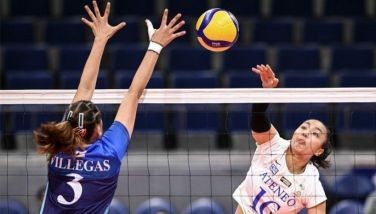Caruana, Mamedyarov pace Candidates
American Fabiano Caruana and Azeri Shakriyar Mamedyarov, shared the Candidates Tournament lead with four points apiece, after six rounds in Berlin, Germany.
Both players were undefeated with an impressive-record two wins and four draws, a full point lead ahead of the elite field.
The other scores read Ding Liren (China), Vladimir Kramnik and Alexander Grischuk (Russia) at three each, Wesley So (USA) and Levon Aronian (Armenia), 2.5 apiece and Sergey Kariakin (Russia), 2.0.
Eight more rounds are still to be played in the double round event which decides Magnus Carlsen’s challenger for the world championship to be held this November in London.
Last issue, we presented the eight candidates’ backgrounds. This time, we wish to present sidelights and a selected game. Of 24 games played, 15 were drawn and nine were won, with the draw percentage surprisingly low, considering the strength of the competition. The game shown below is not necessarily the best game of the tournament (though it can easily merit such appelation), rather it has been selected for being the representative of the styles of the players and for being representative of the tension and temperament of each game.
The bloodiest was the following game if only for the number of moves, that produced the shortest game, a 27-move victory by the Black player.
FIDE Candidates 2018
W) L. Aronian (Armenia)
B) V. Kramnik (Russia)
Ruy Lopez
1. e4 e5
2. Nf3 Nc6
3. Bb5 Nf6
4. d3 Bc5
5. Bxc6 ...
After 5. c3 0-0 6. 0-0 d5 7. exd5 Qxd5 8. Bc4 Qd8 9. b4 Be7 10. Nbd2 Bf5 the game is about even. Anand-Adams, 2017 London Chess Classic. Or 5. Nbd2 d6 6. c3 0-0 7. 0-0 a6 8. Bxc6 bxc6 9. d4 exd4 10. cxd4 Bb6 11. Qc2 c5 12. d5 and White stands better. Anand-Grischuk, World Rapid 2017.
5.... dxc6
6. O-O Qe7
7. h3 Rg8!?
A novelty. With the idea of an early Kingside pawn roller, Black lays his cards on the table right away. More usual here is 7...Nd7.
8. Kh1 ...
After 8. Nbd2 g5 9. d4 Bbxd4 10. Nxd4 exd4 11. e5 Nd5 12. Ne4 Bf5 13. Qxd4 Bxe4 14. Qxe4 0-0-0, chances are about equal, according to the engine.
8.... Nh5
9. c3 g5
10. Nxe5 ...
10. d4 exd4 11. cxd4 Bb6 12. Nh2 Nf6 13. e5 Nd5 14. Nc3 g4 15. Nxd5 cxd5 16. hxg4 Qh4 17. f3 h5 is unclear, according to the computer.
10.... g4
11. d4 Bd6
12. g3 Bxe5
13. dxe5 Qxe5
14. Qd4 Qe7
14...Qxd4 15. cxd4 gxh3 16. Kh2 Be6 17. Nc3 0-0-0, leads to a slight edge for Black in the ensuing endgame.
15. h4 c5
16. Qc4 Be6
17. Qb5ch c6
18. Qa4 ...
18. Qd3 is the engine’s choice, though Black obtains a good game after 18...Rd8 19. Qe3 Bc4 20. Rg1 Rg6.
18.... f5!
As the early chess writers wrote, the opening up of the position almost always favors the player with the better development.
In this case, it is Black who will profit in the opening of the e-file.
19. Bg5 ....
Perhaps not a good choice in the given position, but White’s game is already critical. 19. Na3 seems logical although Black obtains a tangible advantage after 19...f4 20. Kh2 Rff8 21. Qd1 Rd8 22. Qe2 Qc7.
19.... Rxg5!
Black seizes the initiative with this beautiful exchange sacrifice.
20. hxg5 f4
21. Qd1 ....
Hardly commendable, but it is difficult to suggest a good plan for White. E.g. 21. Kg1 fxg3 22. fxg3 Qxg5 23. Qc2 0-0-0 24. Qc1 Qe5 25. Qe3 Nxg3, Black has a clear advantage.
21... Rd8
22. Qc1 fxg3
23. Na3 Rd3
24. Rd1? ...
The losing move, but there’s nothing else. For instance 24. Kg1 Qd6 25. Qc2 Nf4 26. Rad1 gxf2ch 27. Kxf2 g3ch 28. Kg1 c4 and the threat of 29...Qc5ch is hard to meet.
24.... Bd5!
After this, Black’s win is facilitated, as he exploits his opponent’s light square weaknesses.
25. f3 ...
Capturing the Bishop with 25. exd5 leads to a quick finish after 25...Qe4ch 26. Kg1 gxf2ch 27. Kxf2 Qf3ch.
25... gxf3
26. exd5 Qe2!
27. Re1 g2ch
0-1
If 28. Kg1 f2ch 29. Kh2 g1=Qch 30. Rxg1 f1=Qch 31. Kh1 Ng3 mate. Or 28. Kh2 g1=Qch 29. Kxg1 f2ch 30. Kh1 Rh3ch 31. Kg2 f1=Q mate.
Solution to last week’s puzzle:
Black to move and draw.
White=Kd3, Pg5, Ph4
Black=Ke6, Pb4, Pe5
1... Kf5!
2. Kc4 e4
3. Kxb4 e3
4. Kc3 Kf4
5. g6 Kf3!
6. g7 e2
7. g9Q e1Qch
8. K-any Qxh4.
* * *
Black to move and draw.
- Latest
- Trending































